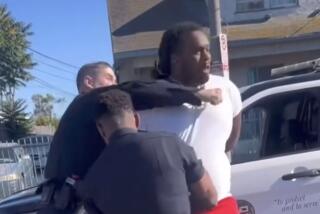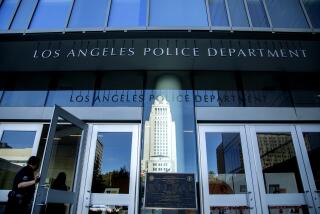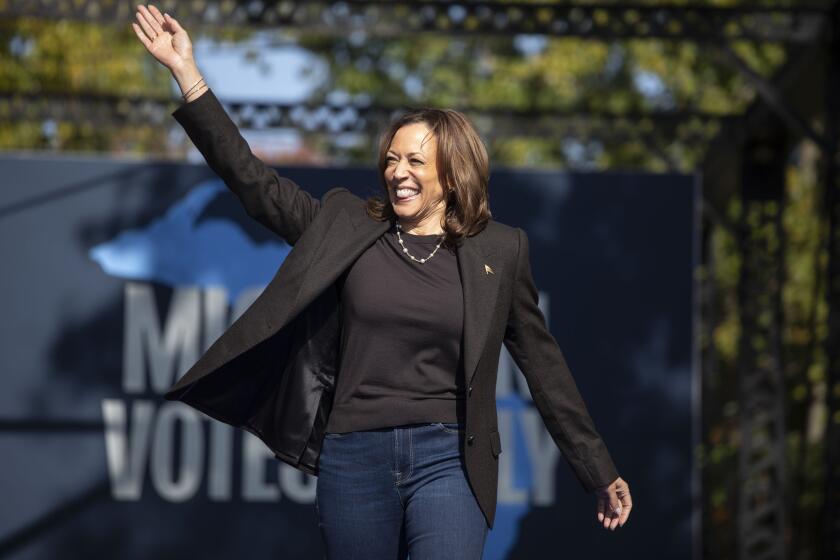Fixing the Fire Department
Nearly two years ago, the brilliant facade of the Los Angeles Fire Department cracked. Long regarded as one of the nation’s premier firefighting agencies, it was reduced by the recession and budget cuts and left unable to deliver the high standard of service Angelenos expected. Complicating matters, its leadership seemed intent on covering up shortcomings rather than confronting them.
Every month, it seemed, there were new revelations. Department leaders relied on inaccurate data to measure response times and misled city officials on how long it took firefighters to reach victims. The LAFD assigned poorly trained firefighters instead of specialists to analyze complex data from the computerized dispatch system. Response was being hindered by an old system, prone to breakdowns, and dispatchers were forced to go through lengthy protocols before sending a firefighter to a medical emergency. Then there was the budget. The LAFD’s expensive staffing model assigned highly paid, highly skilled firefighters to drive patients to hospitals or answer 911 calls, when other fire departments around the country had long ago put civilians in those jobs.
Now, with an improving economy, Mayor Eric Garcetti and the City Council are beginning to rebuild the Fire Department, whose ranks were reduced from 3,500 to 3,234 over the past five years. They’re preparing to hire firefighters for the first time since 2009, and there are plans for modernized deployment and much-needed investments in the 30-year-old dispatch system. Garcetti is also beginning the formal search for the next chief.
Yet a new face at the helm and new firefighters in the ranks won’t by themselves solve the broader issues facing the department. Garcetti and the City Council should not just hire a chief and return to the pre-recession LAFD. The mayor has a challenge and an opportunity to transform the troubled department into an efficient, technologically sophisticated, community-minded agency. This could be the greatest test of his data-driven, “back to basics” agenda if he is willing to spend time and political capital on the job.
There is no more basic city service than public safety. The last two mayors focused on the Police Department, understandably. A decade ago, violent crime was on the rise, the force was short 1,000 officers and the department was under a federal consent decree that mandated improvements. Mayor James Hahn hired William J. Bratton, a police chief with an assertive leadership style and a national reputation for cutting crime. Mayor Antonio Villaraigosa made police hiring his top priority, raising trash collection fees and boosting the department’s budget to eventually expand the force to 10,000 officers.
The LAPD will always need attention and oversight, but now Garcetti and the City Council must devote some of that same energy to fixing the Fire Department. That means addressing some of the fundamental issues facing the LAFD and laying out an agenda for the next chief.
Among the most pressing challenges is the changing nature of the department’s mission. More than 85% of calls to the LAFD are for medical care, not fires. The staffing levels, equipment and deployment don’t fully reflect that shift yet, in part because the LAFD still has to be ready to respond to low-frequency, high-risk fires and earthquakes. The department is working on a new strategic plan and, separately, the city has hired a consultant to study how the LAFD uses its staff. That work, along with the vision of the new chief and a mandate from the mayor, should form the basis of a revised LAFD mission.
The department must also promote professionalism within its ranks. That means eradicating the last remnants of frat-house culture in the fire stations. The LAFD paid $2.6 million in 2013 in judgments and settlements related to discrimination and retaliation lawsuits from firefighters. While those cases originated several years ago, the LAFD’s recently fired independent assessor warned that the department wasn’t adequately handling some complaints, and that the Professional Standards Division didn’t have the staff to investigate misdeeds. The mayor and City Council must affirm their support for an effective internal discipline system and ensure that the department, which is 97% male and predominantly white, works to diversify.
Professionalism also means hiring and promoting leaders with the education and expertise to work with complex data analysis, and the modesty to look outside the agency for the best models of service. Good data must be the foundation of decisions on staffing and equipment, as well as the measure of how the department is serving the public.
The chief may be the most important piece in the reform effort. The LAFD has gone through four chiefs in seven years, and all were internal promotions. Garcetti would be wise to consider an outside candidate — a Bratton of the fire service, if there is one. L.A. needs a long-term chief, someone willing to stick around and build strong relationships with the community, city leaders and the firefighters union. The chief should be able to give an honest assessment of the department’s needs, and should be willing to tell the mayor and the City Council when budget cuts threaten safety. Yet L.A. also needs a chief who will take a hard look at the department’s operations to save money and/or improve service. Such a chief may exist within the ranks, but the search should extend outside as well.
Finally, the mayor must find a chief who can restore public confidence. The LAFD’s problems have overshadowed the life-saving work done every day by the men and women of the department. Emergency response is a core public service. Angelenos deserve the best, smartest and most effective Fire Department possible.
More to Read
A cure for the common opinion
Get thought-provoking perspectives with our weekly newsletter.
You may occasionally receive promotional content from the Los Angeles Times.









